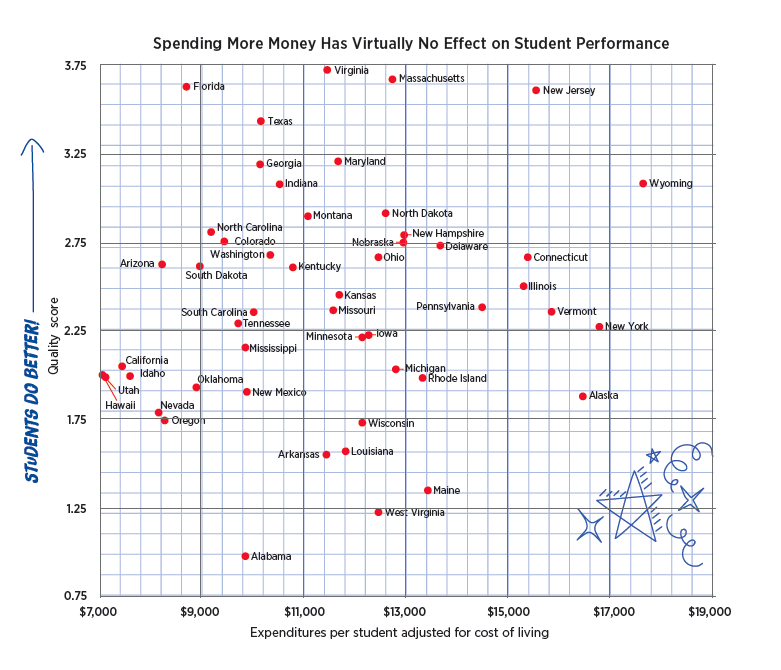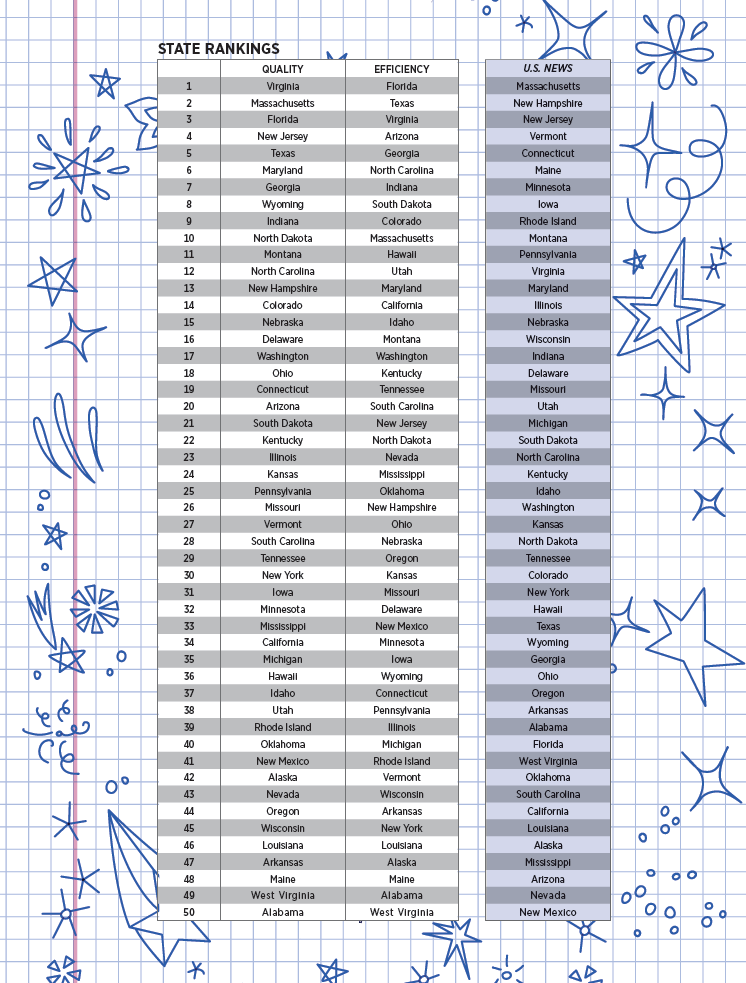In Reason magazine’s “Everything You Know About State Education Rankings Is Wrong,” Stan Liebowitz and Matthew L. Kelly rethink the ranking of state education systems. They write,
To better capture the real state of play, we recently conducted a detailed investigation of state education rankings. We built a new set of rankings based on students’ performance on the National Assessment of Education Progress (NAEP), a battery of standardized tests sometimes called “The Nation’s Report Card.” These tests are given to fourth and eighth graders as well as some high school seniors.
U.S. News and the others also generally use NAEP scores as an element of their rankings, but they use them in a misleading manner. When appropriately analyzed, the evaluation has a very different tale to tell.
We fixed two serious problems common to traditional rankings. First, we removed factors that do not measure K–12 student performance or teaching effectiveness, such as spending per student (intentions to raise performance are not the same as raising performance), graduation rates (which often indicate nothing about learning, since 38 states do not have graduation proficiency exams), and pre-K enrollment.
…
Our second and more important change was to disaggregate student performance data so that we could compare likes with likes. Traditional rankings effectively reward states for not having many minority students. States do well simply because they are populated by families from more socioeconomically successful ethnic categories—not because they are actually doing a good job educating their various categories of students.
Because Liebowitz and Kelly do not focus on inputs, their ranking is much different than other rankings of state education systems. For example, North Carolina goes from 23rd in the U.S. News ranking to 12th in quality and 6th in efficiency in the Reason ranking.




